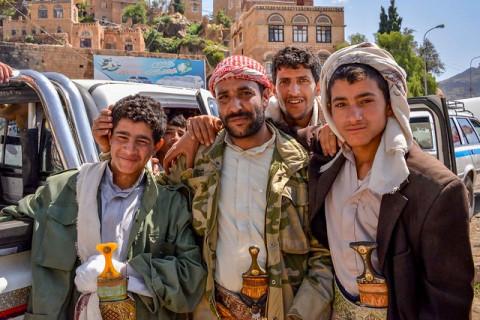When it comes to cultural sensitivity training, it’s a little misleading to think of Middle Eastern culture as something homogenous.
Why? Because the Middle East is a melting pot of ethnicities, languages and religions. These elements all fuse together to give us a rich cultural tapestry.
Naturally, this diversity impacts the shape and nature of Middle Eastern training programmes as allowances need to be made for the specific areas to which people are travelling and the ethnicities and religions of the people with whom travelling business personnel, or expats, will be collaborating.
Although people across the Middle East share many of the core values and cultural practices, there can also be some significant differences.
Let’s explore the way in which these differences, such as ethnicity, religion and language, shape cultural awareness training programmes in this region.
We’ve broken the Middle East down into the areas of the Levant, the Gulf and North Africa to make this overview a little more simple.
Let’s start with the Levant:
- Today the Levant consists of Iraq, Syria, Jordan, Lebanon, The Occupied Territories of Palestine and Israel.
- As the birthplace of both Judaism and Christianity, this region has been of long-standing historic, archaeological and religious significance. The great history and influence of this area have positioned it as the cultural and political capital of the Arab world.
- The region today holds the greatest diversity of religious groups including Jews, Yazidis, Alawites, Nizari, Druze and Ismailis as well as many Levantine Christian groups such as Greek and Oriental Orthodox.
- The Levant is also ethnically diverse, with populations that include Arabs, Kurds, Circassians, Turkmen and many others.
- Although many people living in the Levant share some core values and cultural practices, there are also considerable differences; all of which have been shaped by their ethnic, religious and historical identities.
- As such, it’s important that expats relocating to the region, or, visiting the region on business assignments understand the ethnicities and religions of the people that they will primarily be working with as these factors will affect the way in which business is approached.
Let’s now take a look at the Gulf:
- The Gulf consists of Kuwait, Bahrain, Oman, Saudi Arabia, Qatar, Yemen and the UAE.
- Other than Yemen, all the countries in the Gulf are run by ruling families.
- Yemen had its own ruling family until the late 1960s when Arab nationalist feeling led to the downfall of the monarchy and a subsequent civil war which led to the division of the country into two for years to come.
- The religious diversity of this area is slightly more homogenous than that of the Levant.
- With the UAE playing an exception, the majority of all these countries are Muslim.
- Islam engenders a code of conduct that is widely adhered to in these countries. Although people may have slight differences in the way in which they practice their religion, on the whole, people tend to follow the religion in much the same way. This shared religious identity naturally reduces the differences which are so apparent in the Levant and makes it a slightly more homogenous area.
- In the UAE however, expatriates make up almost 90% of the population. These individuals originate from countries as diverse as America, Europe and Japan with the largest percentage originating from South East Asia; primarily, Pakistan, Bangladesh and the Philippines. Although the local Emirati population share a distinct culture, the large numbers of expatriates have turned the UAE (in particular Dubai) into one of the most multicultural countries globally.
- As such, when expatriates move to the UAE, cultural training incorporates an essential focus on South East Asian culture as most inbound expats will work with colleagues from this area in some way or another.
- For expatriates relocating to other parts of the Gulf, however, Emirati culture tends to be a key focus in cultural training programmes.
Finally, let’s look at North Africa:
It’s often a surprise to people when countries in North Africa are included in the modern-day Middle East.
However, the countries of Tunisia, Algeria, Morocco and Egypt are sometimes included in the Middle East as they share a religious, cultural, social and political history with their Arab counterparts.
- Egypt’s connection to the Arab world is far stronger than any other North African country due to Egypt’s long and ancient history which spans both Arab identity and the Islamic religion.
- Although these countries share many of the core values and practices – primarily driven by their shared adherence to Islam and their shared histories, they also have their own distinct cultural identities which are unique to them only.
- As such, training for people travelling to North Africa may well cover core Middle Eastern cultural practices, but it would also include a significant focus on the specific country too.
So, although people in the Middle East share a great deal in terms of values, customs and cultural practices, there is also huge diversity.
As such, a blanket approach doesn’t necessarily deal with all the nuances that people are likely to encounter.
Want to learn more about culture in the Middle East?
Then sign-up for our online cultural awareness course!
Main image thanks to Rod Waddingon on Flickr (CC BY-SA 2.0)
